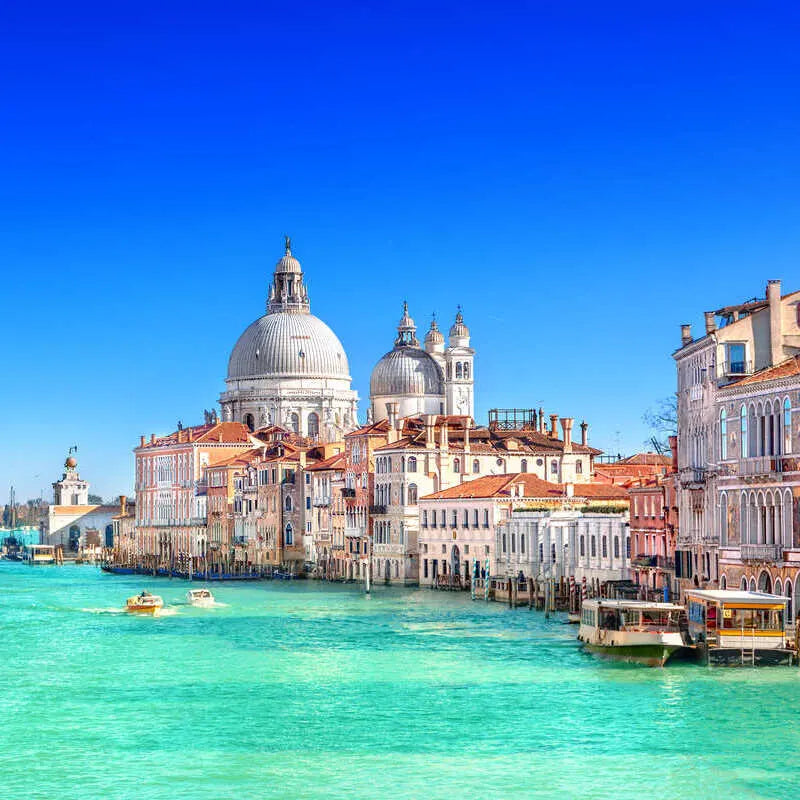Venice is unique in that it was built on wooden piles driven into the soft lagoon sediment. When the city expanded in the 5th century, Venetians used oak and alder trunks, embedding them deep into the muddy seabed. The lack of oxygen prevented the wood from rotting, creating a stable foundation that has lasted for over a thousand years.
However, despite this ingenious construction, Venice has always been vulnerable to subsidence and flooding. The real question is not whether Venice is sinking, but rather how fast it is happening and why.
Yes, Venice Is Sinking – But Not How You Think
Scientific studies confirm that Venice is indeed sinking, but not solely because the city itself is collapsing into the ground. Several key factors contribute to this phenomenon:
-
Natural subsidence – The sandy and muddy ground beneath Venice is slowly compressing under the city’s weight.
-
Groundwater extraction – In the 20th century, groundwater was extensively pumped from beneath the lagoon to supply mainland industries. This caused a dramatic drop in Venice’s ground level. Although this practice was stopped in the 1970s, the damage had already been done.
-
Rising sea levels – Climate change is causing global sea levels to rise, making Venice more vulnerable to flooding.
- Tectonic activity – Studies by NASA show that Venice continues to sink at a rate of 1–2 millimeters per year, with some areas sinking faster than others.
In summary, Venice is sinking slowly, but the more urgent threat is the rising sea level, which is outpacing the city’s ability to adapt.
Acqua Alta – The Increasing Threat of Floods
Seasonal flooding, known as "Acqua Alta", has become a recurring issue in Venice. During autumn and winter, tides push water into the lagoon, submerging the city’s squares and streets.
Why does this happen?
-
Tides from the Adriatic Sea are funneled into the Venetian lagoon, especially during storms and low-pressure weather systems.
-
The city’s canals cannot drain the excess water fast enough, leading to frequent flooding.
- Rising sea levels are making these floods more frequent and severe.
In November 2019, Venice experienced its worst flooding in 50 years, with water levels reaching 187 cm above normal, damaging shops, churches, and historic buildings.
MOSE Project – Can It Save Venice?
To protect Venice from severe flooding, the Italian government invested in the MOSE project (Modulo Sperimentale Elettromeccanico).
MOSE consists of 78 mobile flood barriers placed at the lagoon’s entrances. When tides exceed 110 cm, these barriers are inflated with air and rise above the water to block the incoming sea.
-
Construction began in 2003, but the project was plagued by delays, corruption scandals, and skyrocketing costs.
-
In October 2020, MOSE was activated for the first time, successfully preventing a major flood.
- Criticism of MOSE: While effective in the short term, experts warn that MOSE will need to be used more frequently as sea levels continue to rise, potentially leading to long-term sustainability issues.
Can Venice Be Saved in the Long Run?
Saving Venice is a monumental challenge. While MOSE provides temporary relief, other solutions are being explored:
-
Raising parts of the city – St. Mark’s Square, the lowest point in Venice, could be elevated to prevent frequent flooding.
-
Constructing additional drainage systems – More advanced water management solutions could help Venice cope with rising tides.
-
Injecting sediment beneath the city – Some scientists propose pumping sand and sediment under Venice to slow its sinking.
- Global climate action – In the long term, reducing global warming and sea level rise is the only sustainable solution.
The Future of Venice – Myth or Real Danger?
So, is Venice sinking? The answer is yes – but not in the dramatic way that some headlines suggest.
- The city is sinking at 1–2 mm per year, but the greater threat is rising sea levels.
- Floods are becoming more frequent, but MOSE has proven to be an effective short-term solution.
- Without further action, parts of Venice could become uninhabitable within 100 years.
Despite these challenges, Venice remains one of the world’s most enchanting destinations. Tourism is both a blessing and a curse – vital to the city’s economy but also contributing to its environmental struggles.
If Venice is to survive for future generations, a combination of engineering, environmental policy, and global cooperation is essential. The city has stood for over a thousand years – the question is, can it survive the next hundred?
So next time you stroll across the Rialto Bridge or glide through the canals on a gondola, remember: you’re experiencing a city that is fighting against time, water – and its own fate.



